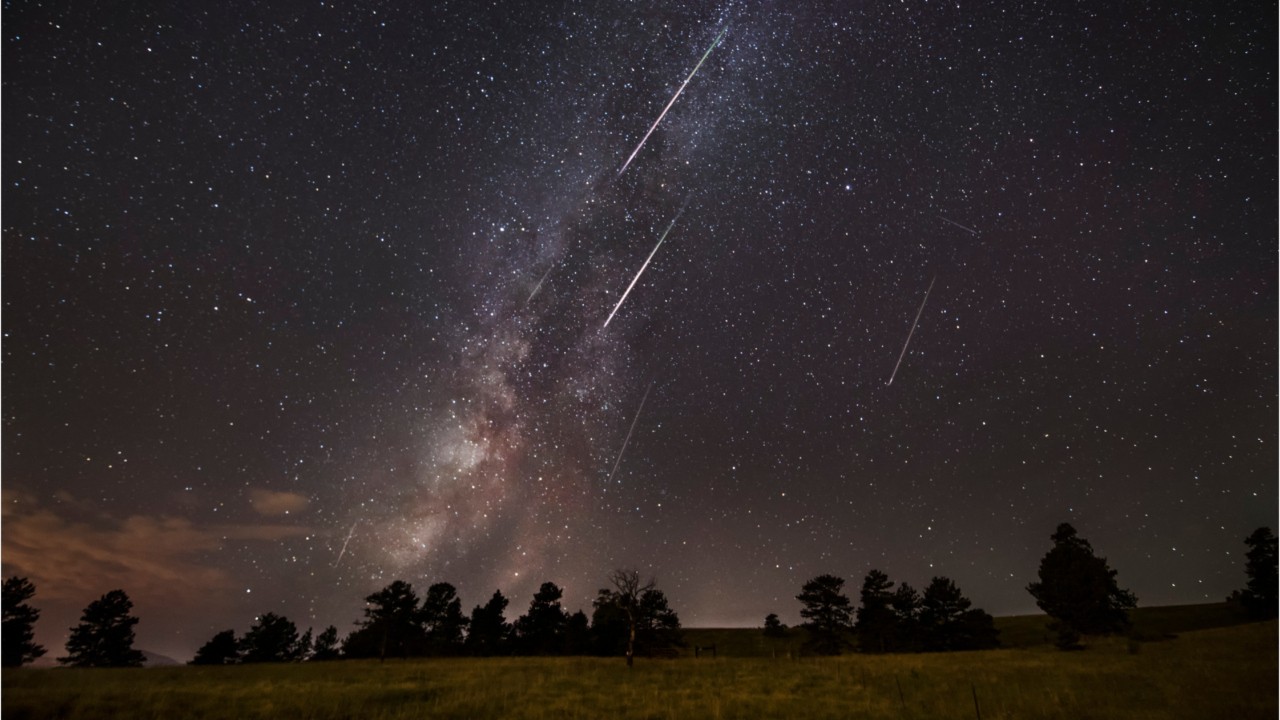Best meteor shower of the year peaks tonight: Here's how to catch the dazzling cosmic display

The Perseid meteor shower will peak tonight alongside a full moon
The Perseid meteor shower is set to peak during the nights of Monday, Aug. 11, and Tuesday, Aug. 12.
LOS ANGELES - The Perseids meteor shower is set to peak Monday and Tuesday nights with the most dazzling displays of the cosmic event.
The meteor shower is widely considered to be the best one of the year because of the brightness and speed of the meteors as well as the optimal time of year for outdoor viewing.
Though the Perseids will be competing with the full moon for visibility in the night sky, experts at NASA say that those planning to watch will still be able to catch about 15 to 20 meteors per hour. If there were no moonlight, one could expect to see 60 each hour.
Lasting from July 14 - Aug. 24, the Perseids meteor shower is one of the most prolific meteor showers, producing as many as 100 meteors per hour during the peak, even if we can’t see them all. Perseid meteors often leave long “wakes,” or trails of light and color, behind them, making for a spectacular show.
It is also known for producing fireballs, which are larger explosions of light and color that can last longer than an average meteor streak because they originate from larger comet particles.
The best time to view the Perseids will be in the early morning hours, between 2 a.m. local time and dawn. Perseid meteors come from the Perseus constellation, so their radiant (the point from which they appear to come in the sky) is in the northern part of the sky.
RELATED: Jupiter, Saturn, moon will align in the night sky, creating epic views this weekend
Meteors are created when fragments break off of comets or asteroids. As comets pass by the sun, they emit dust which slowly spreads out to create a wide trail around their orbits, which the Earth then passes through each year. As the Earth flies through these debris trails, small pieces collide with the Earth’s atmosphere and disintegrate, causing bright streaks in the sky which can be seen from Earth’s surface.
The comet of origin for the Perseids meteor shower is called 109P/Swift-Tuttle — and it’s huge, with a nucleus of about 16 miles across, or twice the estimated size of the object that scientists believe wiped out the dinosaurs. It takes the Swift/Tuttle comet 133 years to make a singular rotation around the sun, and the last time it passed through the inner solar system was in 1992.
To maximize your chances of glimpsing meteors amid the glow of the full moon, NASA suggests getting as far away as possible from light pollution created by city and street lights.
No matter where you’re viewing from, lying on your back and looking up will help maximize the amount of sky within the range of your vision.
And finally, put your cell phone down and give your eyes ample time to adjust. Looking at glowing devices will negatively affect your night vision, and it takes about 30 minutes for your eyes to fully adjust to the darkness.

